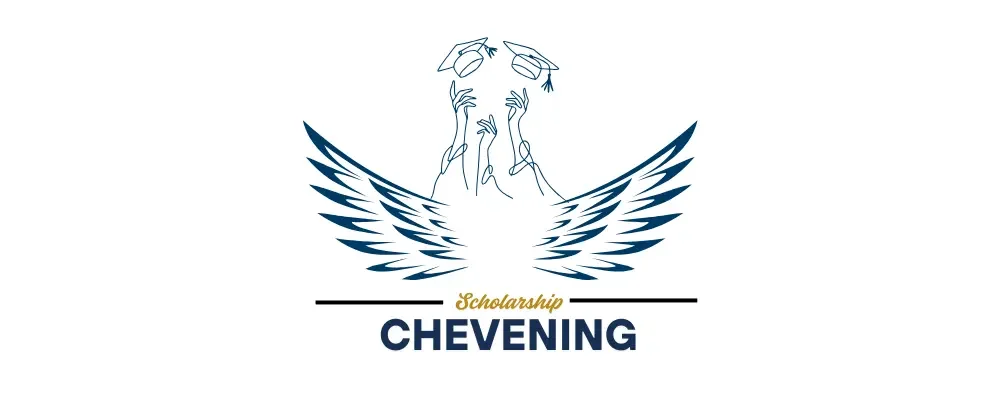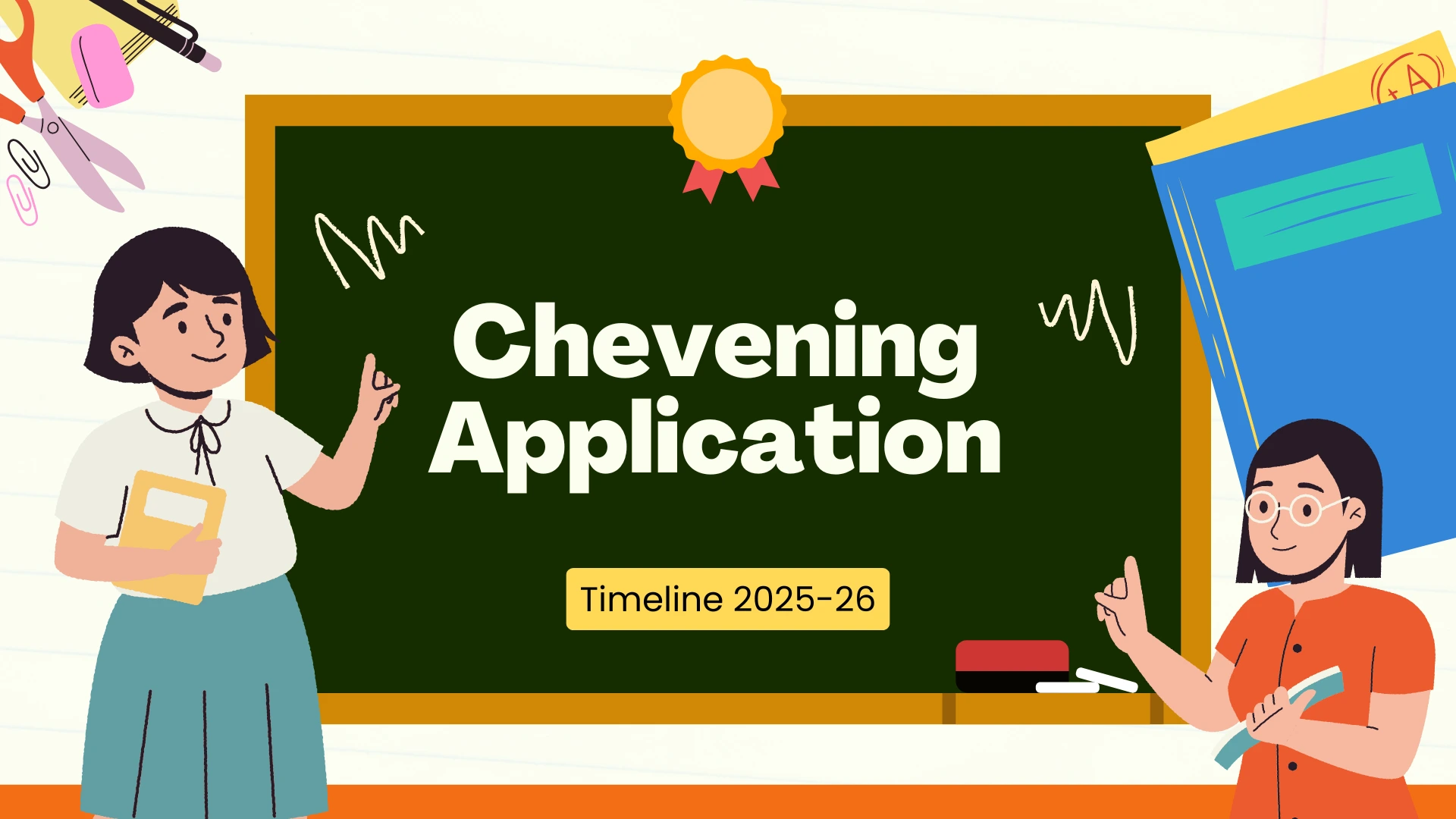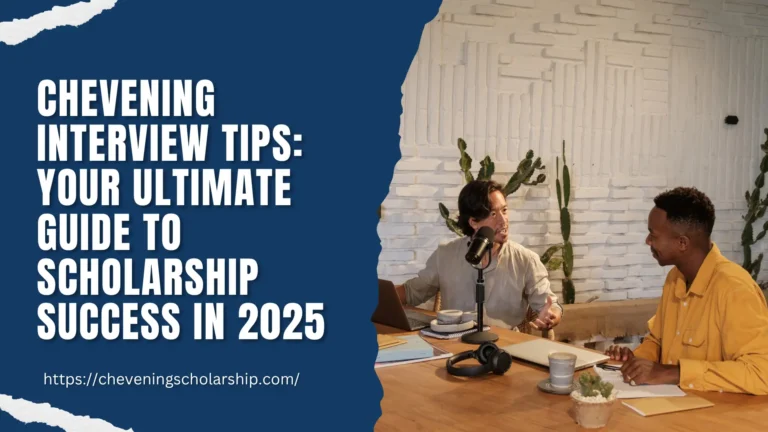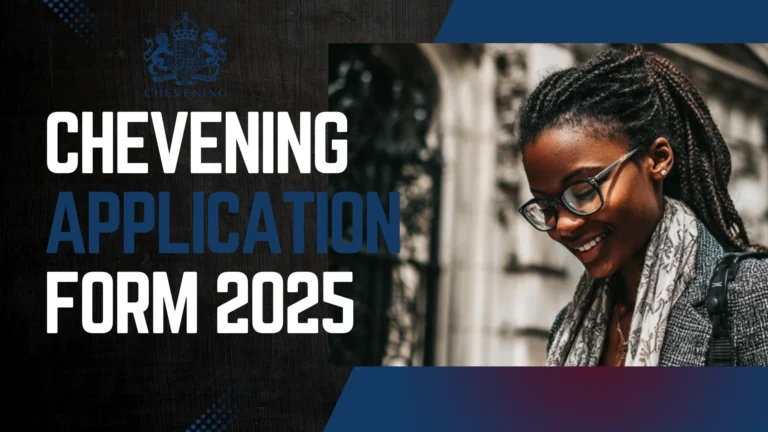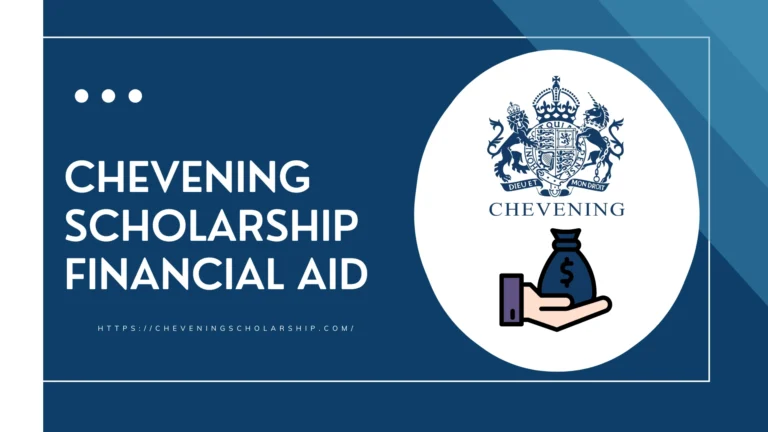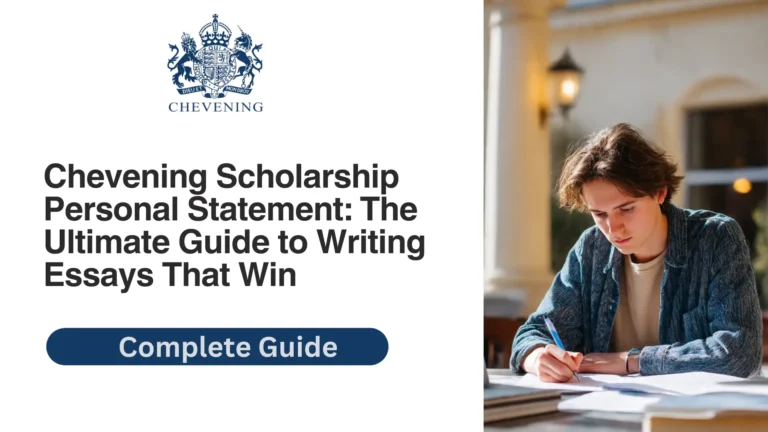The Complete Chevening Application Timeline 2025-26: Your Month-by-Month Guide
Let me tell you about the worst mistake I’ve seen brilliant candidates make: treating the Chevening application like it’s some last-minute university assignment you can nail in a weekend fueled by coffee and panic.
Spoiler alert: you can’t.
The Chevening application timeline is a marathon, not a sprint. It stretches across almost an entire year—from the moment applications open in August to when you’re stepping off a plane in the UK the following September. And every single phase of this timeline has its own deadlines, requirements, and strategic considerations.
Miss one deadline? You’re out. No appeals, no extensions, no “but I had a really good reason” explanations. The timeline is unforgiving, which means understanding it isn’t optional—it’s your first test.
So let’s break down exactly what happens when, and more importantly, how to navigate each phase without losing your mind or missing crucial deadlines.
Understanding the Chevening Scholarship Cycle
The Chevening scholarship cycle follows a predictable pattern each year. Understanding this rhythm helps you plan not just your application, but your entire year leading up to it.
Think of it as a relay race with specific handoff points. Each phase builds on the previous one, and falling behind early means playing catch-up later—if you even get the chance.
The 2025-26 cycle follows this basic structure:
Summer (August): Applications open
Fall (October): Applications close and initial review begins
Winter (November-February): Detailed application assessment
Spring (February-April): Interview invitations and interviews
Summer (June-July): Results and offer acceptance
Fall (September-October): UK arrival and program start
What’s crucial to understand is that while the official timeline covers these broad phases, your personal timeline needs to start much earlier. By the time applications open, you should already be 70% prepared.
August 2025: When Chevening Applications Open
Mark your calendar with a big red circle: August 5, 2025, at 12:00 UTC.
That’s when Chevening applications open for the 2025-26 cycle. And here’s your first timezone challenge—UTC means different things depending on where you are. For folks in Pakistan, that’s 5:00 PM. In Nigeria, it’s 1:00 PM. In Malaysia, it’s 8:00 PM.
Getting the timezone wrong seems like a rookie mistake nobody would make, right? Wrong. Every year, people log in at the wrong time and either panic unnecessarily or miss actual opportunities. Use a timezone converter and set multiple reminders.
The Opening Day Strategy
Here’s what I recommend for Chevening application opens day:
Don’t rush to submit immediately. The portal will be there for two months. What you should do on opening day is:
- Log in and familiarize yourself with the application portal
- Review all questions and requirements
- Confirm what supporting documents you’ll need
- Save your application and start drafting responses
The eager applicants who submit within the first week aren’t necessarily the successful ones. The thorough applicants who use the full window to craft compelling applications are the ones who advance.
Your Pre-Opening Preparation (June-July 2025)
Actually, let’s rewind. If you’re waiting until August 5 to start preparing, you’re already behind. Here’s what your Chevening application preparation timeline should look like before applications even open:
Two months before opening (June 2025):
- Research your three university course choices thoroughly
- Draft initial versions of your four essays
- Identify and approach potential referees
- Gather documents (degree certificates, transcripts, passport)
One month before opening (July 2025):
- Have someone review your essay drafts
- Confirm your referees are willing and able
- Calculate your work experience to ensure you meet the 2-year minimum
- Prepare your CV/resume in the format required
Opening week (Early August 2025):
- Complete your application with polished essays
- Input all personal and professional information
- Upload required documents
- Request references through the portal
Starting early doesn’t just reduce stress—it gives you time for the multiple revisions that separate good applications from exceptional ones.
October 2025: The Application Deadline That Ends Dreams
October 7, 2025, at 12:00 UTC/GMT.
This is the date that separates the “I’ll definitely apply” people from the actual applicants. The Chevening application closes at noon UTC, and I mean closes. The portal literally shuts down. No extensions. No technical difficulty excuses. No “I was just about to submit” pleas.
The Final Weeks Strategy
Here’s how to approach the weeks before Chevening application deadline:
4 weeks out (Mid-September):
- Your application should be 90% complete
- All essays should be in final draft form
- Your referees should have been contacted
- Your documents should be uploaded
2 weeks out (Late September):
- Submit your application
- Follow up with referees to ensure they’ve received the reference request
- Triple-check all sections for completeness
- Verify all documents are correctly uploaded
1 week out (Early October):
- Final referee follow-up
- Screenshot your submitted application
- Confirm you received the submission confirmation email
- Breathe
The Reference Submission Wild Card
Here’s where timing gets tricky. While YOUR application deadline is October 7, your referees have more flexibility. References can be submitted after this date—but don’t count on it.
The smart move is treating the Chevening reference submission deadline as the same as your application deadline. Why? Because referees are busy people with their own deadlines. Giving them the same timeline you’re working with means you’re likely to actually get those references submitted on time.
I’ve seen outstanding applications become non-starters because referees didn’t submit on time. Don’t let your scholarship dreams depend on someone else’s time management.
October to February 2026: The Waiting Game Begins
After you hit submit on October 7, something both relieving and torturous happens: nothing. At least, nothing you can see.
Behind the scenes, though, the Chevening application review timeline kicks into high gear:
October 2025: Applications are sorted against basic eligibility criteria. This is the administrative sift—do you have the required work experience? Is your degree valid? Are you from an eligible country? This phase eliminates applications that don’t meet minimum requirements.
November 2025 – January 2026: Independent reading committees assess all eligible applications. These committees are composed of Chevening alumni, UK government officials, and education professionals. They’re reading thousands of applications, scoring essays, evaluating qualifications, and determining who deserves an interview.
This is where your essays either shine or sink. Reading committee members are looking for evidence of leadership, networking capability, clear career plans, and genuine commitment to returning home and making a difference.
The Chevening Interview: Questions, Tips, and How to Prepare
What to Do During the Waiting Period
You might think there’s nothing to do between submission and interview invitations. Wrong. Here’s your Chevening application later stages preparation checklist:
November-December 2025:
- Review your application (you saved a copy, right?)
- Start preparing for potential interviews
- Research common Chevening interview questions
- Practice articulating your essays verbally
- Identify examples you didn’t use in essays but might use in interviews
January 2026:
- Refresh your memory on UK university courses you selected
- Stay current on developments in your field
- Review news related to your home country’s development challenges
- Practice mock interviews with friends or mentors
February 2026:
- Have your interview outfit ready
- Test your internet connection if interviews might be virtual
- Prepare questions you’d like to ask interviewers
- Get mentally ready for potential good (or disappointing) news
The worst thing you can do during this period is completely forget about Chevening and then scramble if you get an interview invitation with two weeks’ notice.
Mid-February 2026: Interview Invitations
Around mid-February, British embassies and high commissions worldwide produce their interview shortlists. If you receive an invitation, congratulations—you’ve already beaten thousands of other applicants.
The Chevening interview announcement date isn’t the same for everyone. Different countries release their shortlists at different times within a window spanning late February to early March. Don’t panic if someone from another country gets their invitation before you do.
What an Interview Invitation Means
Being shortlisted for an interview means your application was strong enough to make you a potential Chevening scholar. But—and this is crucial—it doesn’t guarantee anything.
The Chevening interview timeline invitation will include:
- Your interview date and time
- Whether it’s in-person or virtual
- What documents (if any) to bring
- How long to expect the interview to last
- Panel composition (usually 3-4 people)
You’ll typically have 2-4 weeks between invitation and actual interview. Use every single day of that time to prepare.
The Reference Deadline Extension
Here’s an important detail: if you’re invited to interview, your referees have until the end of the global interview period to submit references. This means if your references weren’t submitted by the application deadline, they can still be submitted now.
However—and I can’t stress this enough—don’t rely on this grace period. References submitted during the application window demonstrate organization and preparedness. Last-minute references suggest poor planning.
March to April 2026: The Interview Period
The Chevening interview period stretches from March through April, with most interviews clustered in March. The exact scheduling depends on your country’s embassy or high commission.
What to Expect in Your Interview
Chevening interviews typically last 20-30 minutes and cover four main areas:
Leadership Experience: They’ll dig deeper into the leadership examples you provided in your essay. Expect follow-up questions that probe beyond what you wrote. “Tell me about a time leadership was difficult for you” or “How did you handle disagreement from team members?”
Networking Capabilities: They want to understand how you build and maintain professional relationships. “Give me an example of how a professional relationship helped you solve a problem” or “How do you add value to your network beyond asking for favors?”
Career Goals: Your plans need to be realistic and specific. “What exactly will you do in your first year after returning from the UK?” or “How does this specific master’s program fill gaps in your capabilities?”
UK Study Plans: They’ll test whether you’ve actually researched your chosen programs. “Why these three specific universities?” or “How do the modules in your top choice align with your career plans?”
Interview Preparation Timeline
Here’s how to structure your Chevening scholarship interview preparation timeline:
3 weeks before:
- Review your application thoroughly
- Research your interviewers on LinkedIn if possible
- Prepare responses to common questions
- Conduct 2-3 mock interviews
2 weeks before:
- Refine your responses based on mock interview feedback
- Prepare questions to ask the panel
- Research recent UK-your country relations
- Ensure technical setup works if virtual
1 week before:
- Do a final mock interview
- Prepare your outfit and materials
- Test everything (internet, camera, microphone)
- Practice calm breathing and confidence techniques
Day before:
- Get good sleep
- Review notes lightly (don’t cram)
- Prepare everything you need for interview day
- Set multiple alarms
Virtual vs. In-Person Interviews
Post-pandemic, many Chevening interviews happen virtually. Each format has considerations:
Virtual interviews:
- Test your technology thoroughly beforehand
- Ensure good lighting and professional background
- Have a backup device and internet connection ready
- Maintain eye contact with camera, not screen
- Minimize potential interruptions
In-person interviews:
- Arrive 15-20 minutes early
- Dress professionally
- Bring copies of documents (passport, application, references)
- Turn off your phone completely
- Remember that you’re being assessed from arrival, not just during the interview
June 2026: Results Announcement
After months of preparation and weeks of waiting, mid-June brings the moment of truth. The Chevening results announcement happens in waves starting in mid-June and continuing into early July.
The Results Timeline
Chevening scholarship results are released by country/region, not globally all at once. Factors affecting when your results come include:
- Number of applicants in your country
- Number of interviews conducted
- Embassy/high commission processing speed
- Whether there are any complications with specific applications
You might see people from other countries celebrating while you’re still waiting. This doesn’t mean bad news—it just means different administrative timelines.
If You’re Successful
Congratulations! But your work isn’t finished. Successful candidates face an immediate challenge: the university offer requirement.
You need at least one unconditional offer from a UK university by the Chevening offer deadline: July 9, 2026, at 17:00 BST (UK time).
This is roughly 3-4 weeks from results announcement to offer submission. For some applicants, this is the most stressful phase of the entire process.
The University Offer Challenge
Here’s why the Chevening university offer deadline creates anxiety: you might have applied to UK universities months earlier, but you might not have received offers yet. Or you might have received conditional offers that haven’t yet become unconditional.
Your strategy should have started much earlier:
December 2025 – January 2026: Apply to your three chosen UK universities. Don’t wait for interview results. Apply regardless, because you’ll need these applications in process if you’re successful.
February – April 2026: Monitor your university applications. Respond quickly to any requests for additional information. Stay in contact with admissions offices.
May – June 2026: If you receive conditional offers, work to satisfy the conditions. If you haven’t heard from universities, follow up professionally.
Post-Results (June 2026): If you’re successful but don’t have an unconditional offer yet, contact your universities immediately. Explain that you’ve been awarded a Chevening scholarship and need your offer status confirmed urgently.
Many universities are familiar with the Chevening timeline and will prioritize processing your application if they know you’re a Chevening scholar. But they can’t prioritize what they don’t know about—communication is essential.
July 2026: The Final Deadline
July 9, 2026, at 17:00 BST.
This is your drop-dead deadline for submitting at least one unconditional UK university offer. Miss this, and your Chevening scholarship evaporates, regardless of how brilliant your interview was.
The Chevening final selection timeline ends here. After this date, if you haven’t submitted an unconditional offer, you’re withdrawn from the program. The scholarship is offered to another candidate.
This might seem harsh, but there’s logic: Chevening needs to finalize scholar numbers, arrange logistics, and prepare for September arrivals. They can’t extend individual deadlines without throwing off the entire system.
What Counts as an Unconditional Offer
An unconditional offer means exactly what it sounds like: the university has confirmed your place with no outstanding requirements. You’ve met all academic criteria, language requirements, and administrative conditions.
A conditional offer—even if the condition seems easy to meet—doesn’t count. You need that “unconditional” status in writing from the university before you can submit it to Chevening.
September-October 2026: Arrival in the UK
Assuming you’ve navigated all previous deadlines successfully, late September or early October marks your Chevening start date. You’ll arrive in the UK, begin your program, and join a cohort of scholars from around the world.
The Chevening enrollment timeline varies by university. Some programs start in late September, others in early October. Your specific start date depends on your university’s academic calendar.
Pre-Departure Timeline
August 2026:
- Complete visa application
- Book flights
- Arrange accommodation
- Attend pre-departure briefings (virtual or in-person)
- Finalize travel logistics
September 2026:
- Travel to UK
- Check in with Chevening team
- Complete university enrollment
- Attend orientation sessions
- Meet fellow scholars
The Broader Timeline Perspective
From application opening (August 2025) to UK arrival (September 2026), you’ve navigated 14 months of deadlines, requirements, and decisions. Each phase tested different capabilities: organization, writing, interview skills, university application savvy, and deadline management.
This timeline isn’t arbitrary bureaucracy—it’s a filter. Chevening wants scholars who can manage complex processes, meet stringent deadlines, and navigate administrative challenges. If you can successfully complete this application journey, you’ve already demonstrated you have what it takes to succeed in a UK academic environment and in future leadership roles.
Creating Your Personal Chevening Timeline
Now that you understand the official timeline, let’s talk about creating your personal Chevening application process timeline. Here’s a month-by-month action plan:
| Month | Official Milestone | Your Action Items |
|---|---|---|
| June 2025 | Pre-opening prep | Draft essays, research courses, identify referees |
| July 2025 | Pre-opening prep | Finalize essays, confirm referees, gather documents |
| August 2025 | Applications open | Complete and submit application, request references |
| September 2025 | Application window | Final polishing, referee follow-ups, submission |
| October 2025 | Applications close | Submit by October 7, confirm receipt |
| November-January 2026 | Review period | Interview preparation, stay current in your field |
| February 2026 | Interview invitations | Intensive interview prep if shortlisted |
| March-April 2026 | Interview period | Complete interview, continue preparing for results |
| May 2026 | Waiting period | Monitor university applications, stay hopeful |
| June 2026 | Results announced | Celebrate or process disappointment, pursue offer |
| July 2026 | Offer deadline | Submit unconditional offer by July 9 |
| August 2026 | Pre-departure | Visa, accommodation, logistics |
| September 2026 | UK arrival | Begin your Chevening journey! |
Common Timeline Mistakes to Avoid
Over the years, I’ve seen applicants make the same timing errors repeatedly. Learn from their mistakes:
Starting Too Late: Waiting until August to begin thinking about your application means rushed essays, stressed referees, and subpar work. Start in June at the latest.
Underestimating Essay Time: You can’t write four compelling 500-word essays in a weekend. Each essay needs multiple drafts. Budget at least 2-3 weeks for essay writing and revision.
Forgetting About Referees: Your referees have their own schedules and deadlines. Contact them at least 6-8 weeks before the application deadline, not 6-8 days.
Ignoring University Applications: Some people wait for Chevening results before applying to UK universities. Wrong move. You should be applying to universities in December-January, months before results.
Missing the Timezone: Every year, people miss deadlines because they didn’t properly convert UTC to their local time. Use timezone converters and set calendar reminders that automatically adjust.
Leaving References to the Last Minute: Just because references can be submitted after your application doesn’t mean they should be. Organize early.
Not Planning for Offer Urgency: The 3-4 weeks between results and offer deadline is tight. If you haven’t already applied to universities, this becomes nearly impossible.
Forgetting About Visa Processing: After receiving your scholarship, you still need a UK visa. Visa processing takes time. Factor this into your planning.
Frequently Asked Questions About the Timeline
Can I edit my application after submitting but before the deadline?
No. Once you submit, your application is locked. The only thing that can still be added or changed is references, which your referees submit separately. This is why thorough review before submission is crucial.
What happens if my referee submits their reference after the October deadline?
If you’re not invited for interview, a late reference won’t help you. If you ARE invited for interview, references can be submitted up until the end of the global interview period. However, this is a backup plan, not a strategy.
When exactly will I know if I have an interview?
Interview invitations typically go out in mid-to-late February, but the exact date varies by country. Some countries send invitations in early February, others in early March. Don’t panic if you see others getting invitations before you.
How long after my interview will I receive results?
Results typically come 8-12 weeks after your interview, with most results announced in mid-June. The exact timing depends on how early in the interview period your interview occurred and how quickly your country’s embassy processes results.
What if I receive my Chevening results but don’t have a university offer yet?
Contact your universities immediately, explaining that you’ve been awarded a Chevening scholarship and need your application expedited. Many universities will prioritize Chevening scholars if they know about the scholarship.
Can the university offer deadline be extended?
No. The July 9 deadline is firm. Extensions are not granted for individual circumstances. This is why applying to universities early—before you even know your Chevening results—is critical.
Is the timeline the same for all countries?
The overall structure is the same globally, but specific dates within that structure can vary. Interview periods, for example, might start earlier in some countries than others. Always check with your country’s British embassy or high commission for country-specific details.
What if I miss the application deadline?
You’ll have to wait until the next cycle. There are no exceptions, extensions, or special circumstances that allow late applications. The system literally closes at the deadline.
Should I start my UK visa application before receiving my university acceptance?
No. You need your unconditional university offer and CAS (Confirmation of Acceptance for Studies) before applying for your visa. However, you should be preparing documentation and understanding visa requirements during the July-August period.
Can I defer my Chevening scholarship if I’m not ready to start in September?
Deferrals are extremely rare and only granted in exceptional circumstances (usually health-related). Chevening scholarships are for a specific academic year. If you can’t attend that year, you would typically need to reapply for a future cycle.
Managing Stress Throughout the Timeline
Let’s be real: the Chevening timeline is long and stressful. From initial preparation to UK arrival, you’re managing almost a year and a half of deadlines, uncertainty, and high stakes.
Here’s how to stay sane:
Break It Into Phases: Don’t think about the entire 14-month timeline. Focus on the immediate phase you’re in. When you’re preparing your application, focus only on that. When you’re preparing for an interview, that’s your only priority.
Build In Buffer Time: For every personal deadline you set, build in a buffer. If you plan to submit your application by October 1, aim internally for September 25. This buffer protects you from unexpected complications.
Find Application Buddies: Connect with other Chevening applicants through social media groups or forums. Sharing the journey with others reduces isolation and provides mutual support. Just be careful not to let comparison steal your confidence.
Celebrate Small Wins: Application submitted? Celebrate. Interview invitation received? Celebrate. Interview completed? Celebrate. Don’t wait until final results to acknowledge your progress.
Maintain Perspective: Yes, Chevening is competitive and prestigious. But it’s not your only path to growth and success. Whether you receive this scholarship or not, your worth and potential remain unchanged.
Keep Living Your Life: Don’t put your entire existence on hold for Chevening. Continue excelling at your job, maintaining relationships, and pursuing other goals. This keeps you balanced and gives you fallback options if Chevening doesn’t work out.
Using the Timeline Strategically
Understanding the Chevening timeline isn’t just about meeting deadlines—it’s about using the timeline strategically to strengthen your application.
Start When It Benefits You: The application opens in August, but you don’t have to submit immediately. Use the full two-month window to refine your essays, get feedback, and produce your best work.
Leverage University Application Timing: UK universities typically open applications in September-October. This aligns perfectly with the Chevening application process. You can research universities for your Chevening application while simultaneously preparing to apply to those universities directly.
Use Waiting Periods Productively: The months between application and interview invitation aren’t just waiting—they’re preparation time. Use them to deepen your subject knowledge, strengthen interview skills, and stay current in your field.
Plan University Applications Strategically: Some applicants wait for Chevening results before applying to UK universities. Smart applicants apply to universities in December-February, giving themselves months to secure offers before the July deadline.
Front-Load the Stress: By starting early and working steadily, you front-load the stress. July through October 2025 might be intense, but November through February 2026 can be relatively calm. This beats the alternative: panicking in February because you’re behind.
Final Timeline Tips
As we wrap up this comprehensive timeline guide, here are my final pieces of advice:
Set Calendar Reminders Now: Don’t wait. Right now, add every major Chevening deadline to your calendar with multiple reminders.
Create a Personal Countdown: Whether it’s a physical calendar, a phone app, or a spreadsheet, track days until major milestones. This keeps urgency visible.
Document Everything: Save copies of everything you submit. Screenshot confirmations. Keep email records. If any questions arise later, you’ll have proof.
Stay Flexible: Despite this detailed timeline, unexpected things happen. Universities might take longer to process applications. Embassies might shift interview dates. Build flexibility into your planning.
Trust the Process: The timeline seems long, but each phase has purpose. Trust that the selection committee knows what they’re doing, even when waiting feels excruciating.
Prepare for Any Outcome: Whether you receive the scholarship or not, you’ll have gained valuable skills through this process: essay writing, interviewing, university applications, and deadline management. These skills transfer to countless other opportunities.
The Timeline Starts Now
Whether you’re reading this in June 2025 or January 2026, your Chevening timeline starts right now—not when applications officially open, not when you “have more time,” but today.
If applications haven’t opened yet, you should be preparing. If you’re in the application window, you should be finalizing. If you’re waiting for interviews, you should be practicing. If you’re post-interview, you should be pursuing university offers.
Every single day between now and your potential UK arrival is part of your Chevening timeline. The question isn’t whether you have enough time—the question is whether you’ll use the time you have strategically.
The Chevening application timeline for 2025-26 is your roadmap. You now understand every major milestone, deadline, and strategic consideration. You know when things happen and why they matter.
What you do with this knowledge determines whether you’re among the select few who receive that congratulations email in June 2026, or among the many who miss out because they didn’t respect the timeline.
Mark your calendar. Set your reminders. Create your plan. And start working.
Because somewhere in the UK, there’s a master’s program waiting for you. And the only thing standing between you and that opportunity is a series of deadlines you either meet or miss.
The choice, and the timeline, are yours.
Ready to begin your Chevening journey? Visit the official Chevening website to access the application portal and country-specific information. Your 2025-26 timeline starts now.
